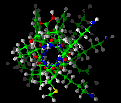Font Conventions for Keywords
Several type style conventions are used to distinguish
different kinds of keywords. For example:
command ?keyword = value? ...
Words (or letters) in bold indicate the names of commands and
must be typed exactly as shown. Note that all commands and parameter
names are case-sensitive and must be typed as shown.
Words in italics indicate options that must be replaced with
appropriate text. These may be items that must be replaced by specific
text (for example, path, keyword, filetype, operation), items
to be replaced by values of the appropriate type (for example,
value, arg), or user-supplied variable names
(for example, varName).
Italics are also used to indicate the names of internal
Discover databases and their named parts.
Assignment and Types of Values
The syntax keyword = value is used for many command
options, where = value is used to change the default value of an
option.
The lists of keywords in the Syntax sections explain the
character sequences that may be used as keywords and their values for
each command, including occasional synonymous keywords that may be
used interchangeably. The keywords are case-sensitive and must
be typed exactly as written.
Some of the listed keywords contain an asterisk (*) within the
word. This indicates that the letters to the left of the asterisk
must be typed exactly as written and that the word can be truncated at
any point to the right of the asterisk. However, any characters that
are typed must be exactly as written in the table. (Note that the
asterisk itself is used only for documentation and must not be
typed as part of the keyword.)
The values appropriate to each keyword are also specified in
the table. Their type is indicated if it is real, integer, string, or
Boolean; for enumerated constants, the allowed values are
specified.
- Real numbers can be represented in floating-point or exponential
form. Both real and integer numbers are actually input as
strings. The Discover program converts the string to the appropriate
numerical form, depending on the context. Numbers are used for molecule
numbers, force constants, etc.
- Strings need to be enclosed in quotation marks or braces only if
they contain spaces. These are case-sensitive. Character strings are
typically used for file names, residue names, atom names, etc. Residue
names must have the same case (or mixture of cases) as they have in the
residue library or Cartesian coordinate file.
- Boolean values are used to select items that can be present
or absent; they can act as toggles to activate and deactivate some
options; and they are used for setting some variables to true
or false. Boolean values are case-insensitive (e.g.,
ON, on, and On are equivalent). Note that the Discover
95.0 program handles Booleans different than does the Discover
3.1 program.
- Enumerated parameters (enums) take specific string
constants (listed in the keyword tables) and are used for selecting
mutually exclusive options. For example, in the minimize command, the
method can be steepest, conjugate, newton, or
cascade, and nothing else. Enum values are
case-insensitive.
Where a value is expected, an appropriate variable or expression may also
be used.
Punctuation Conventions
Optional items in the syntax line are enclosed between question marks
(? ?).
Ellipses (...) indicate that the preceding item can be repeated. A
vertical line ( | ) separates alternative keywords. These
symbols themselves are used for syntax-documentation only and should
not be included in the real command.
 Main
access page
Main
access page  Advanced-Use access.
Advanced-Use access.
 BTCL Language access
BTCL Language access
 Global Variables and Environment Variables
Global Variables and Environment Variables
 BTCL Commands
BTCL Commands
Copyright Biosym/MSI
 Format for Documenting
Syntax
Format for Documenting
Syntax Format for Documenting
Syntax
Format for Documenting
Syntax Main
access page
Main
access page  Advanced-Use access.
Advanced-Use access.  BTCL Language access
BTCL Language access
 Global Variables and Environment Variables
Global Variables and Environment Variables
 BTCL Commands
BTCL Commands